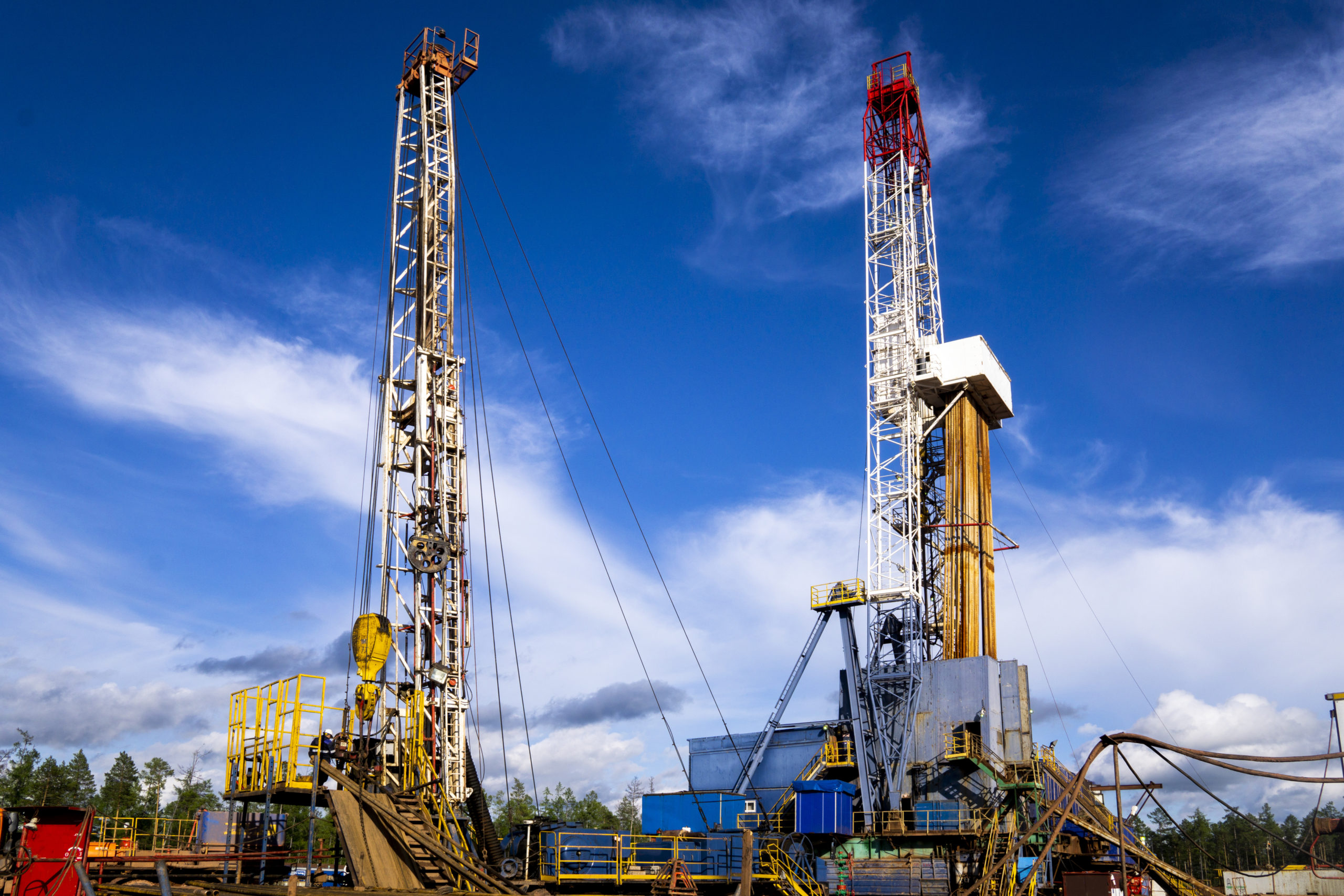Introduction
Oil prices remained high during the final quarter of 2021, averaging c.$80, an important figure for the continued recovery of the industry from the collapse in drilling seen in 2020. As a result, the quarter saw continued stability in drilling activity as operators progressed drilling programmes. The outlook for 2022 is broadly positive with a series of delayed drilling programs from 2020 and 2021 now underway. Major contracts announced in the last quarter of the year are expected to begin activity in 2022 as operators look to recover from a turbulent period for the global energy industry.
International rig contractors are expected to benefit from this increased activity as drilling rates continue to increase but will face stiff competition for contracts as many NOCs continue to utilise national contractors’ rigs, such as the $3,8 billion contract awarded to ADNOC Drilling. M&A activity remained strong with the Permian basin proving a key area for acquisitions with several deals being completed over 4Q 2021.
Key M&A
- Patterson completed the acquisition of Pioneer Energy Services
- CWC Energy acquired SST Energy in a deal worth $17.3 million
Contract Awards
- ADNOC Drilling extended contracts in $3.8 billion deal with ADNOC’s onshore arm
- ADNOC awarded almost $6 billion of contracts to enable increase in drilling activity
- KCA Deutag secured c.$185 million of land drilling contracts in the Middle East
- Nabors signed a deal to become Chesapeake’s preferred drilling contractor for onshore US drilling
Middle East
The major story in the region last quarter was the almost $10 billion of contracts UAE NOC Abu Dhabi National Oil Company (ADNOC) awarded to rig contractors and OFS companies. These contracts are part of its plan to ramp up drilling activity to boost crude oil production capacity to 5 mmbpd by 2030 and achieve gas self-sufficiency.
ADNOC Drilling has continued to build off the back of its IPO, signing a five-year agreement worth $3.8 billion with the NOC for drilling, workover and well services. Abdulrahman Abdullah Al Seiari, CEO of ADNOC Drilling, said: “This contract award further extends a 50-year profitable and unique partnership. Working together, we will continue to drive value for ADNOC and the UAE, delivering on the 2030 strategic production capacity and gas self-sufficiency targets.” ADNOC Drilling is now set to focus on geographical expansion and continued development of its oilfield service offerings.
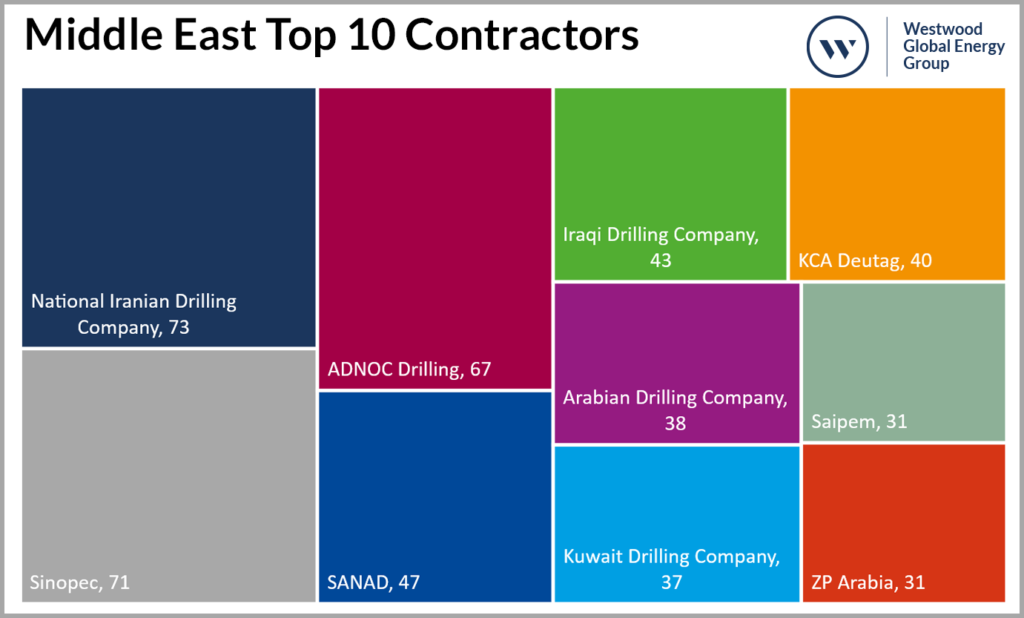
Figure 1: Middle East Top 10 Contractors by Rig Fleet Size
Source: Westwood Analysis
Data from Westwood’s Global Land Drilling Rig tool indicates that ADNOC Drilling has the third largest rig fleet of all rig contractors in the Middle Eastern market, with 67 units in total. Of these 67, 53 are in the 1,500 and above HP range.
ADNOC also announced contracts for a variety of services associated to drilling worth almost $6 billion to a number of players:
Table 1: ADNOC contract Awards (announced 16th November 2021)
| Service | Value ($million) | Company | Contract duration (Years) |
| Wellheads | $1,635 | TechnipFMC | 10 |
| Wellheads | $1,635 | Baker Hughes | 10 |
| Downhole completion equipment | $1,410 | Schlumberger | 5 (+2) |
| Downhole completion equipment | $931 | Weatherford | 5 (+2) |
| Line hangers and cementing accessories | $337 | Baker Hughes, Weatherford, Downhole Products, NeOz Energy, Sledgehammer | 5 (+2) |
To meet ADNOC’s ambitious production targets E&A activity will need to continue at a strong rate and near the end of the year ADNOC reported significant oil, condensate and gas discoveries in block four, an area operated by Inpex. According to ADNOC, the discoveries, the first in the block, have potential reserves of 1 billion barrels of oil equivalent. Inpex, 100% owner and operator of the block since 2019, has pledged $176 million in the block’s exploration stage. ADNOC has the option to take a 60% stake in the production phase of the project, which is close to the Al Dabb’iya and Rumaitha fields that are owned by ADNOC and already in production. The next steps involve appraising the resources, as well as further exploring the potential of the block.
The Middle East was a hotbed of activity for other rig contractors as well. In November, KCA Deutag was awarded contract extensions worth c.$185 million across key markets in the Middle East. Multiple rig extensions were secured in Saudi Arabia representing 13 years of work across three rigs, while in Oman two 2,000 HP rigs have received one year contract extensions. Forty rigs of KCAs Land Rig Fleet are in the Middle East, with Oman (22 units) and Saudi Arabia (8 units) hosting the largest KCA fleets in the region at present. Of the 40 rigs in the region, 30 have a HP range of 1,500 HP or higher while the average hookload capacity is 892,108 lbs.
Africa
Two pipelines, which will be vital to the ramping up of drilling activity in Africa moved forward in Q4 2021. CNPC announced that construction of the 1,950 km pipeline from Niger’s Agadem basin to Benin’s Port Seme began in early October and is due to be completed in 2022. The pipeline will have a capacity of 90,000 bopd, primarily transporting oil from CNPCs second phase development in the Agadem basin.
The 1,445 km East African Crude Oil Pipeline (EACOP) project has also seen progress with the TotalEnergies led joint venture selecting preferred bidders for $1.1 billion worth of contracts. These contracts will only be ratified once all the EACOP partners have sanctioned the scheme. EACOP will carry oil from the TotalEnergies operated Tilenga complex and CNOOC operated Kingfisher field to the Tanga port in Tanzania. The development will see 426 wells drilled on 31 well pads and is expected to cost $15-20 billion. Chinese company ZPEB, a subsidiary of Sinopec, is set to provide the drilling rigs, tubular running and fishing services in a deal worth $210 million.
Savanah Energy have announced the completion of a $626m deal to acquire upstream and midstream assets in Chad and Cameroon from Petronas and ExxonMobil. The deal, which was first made public in June 2021 includes stakes in multiple oilfields located in Chad, as well as a 70% stake in the Chad-Cameron pipeline, a 1,070 km oil line that exports crude from Chad to the Cameroonian coast. The oilfields are those that make up the Doba Oil Project, which Savanah Energy will have a 75% stake in, with Chadanian state oil company owning the remaining 25%. Average production of the Doba oil project in 2020 was 33.7 kbbl/d.
In field development news, SDX Energy announced the spudding of the KSR-19 well in the Gharb basin, marking the start of the second phase of its 2021 drilling campaign. The well was drilled by the 1,000 HP, Star Valley Rig 101, one of only two land drilling rigs currently located in Morocco. In mid-December SDX Energy announced they had experienced operational issues affecting the drilling of the KSR-19 well and had issues with covid-19 restrictions impacting mobilisation of the rig and personnel. The two well campaign, also including SAK-1, is now expected to be completed in mid-1Q 2022.
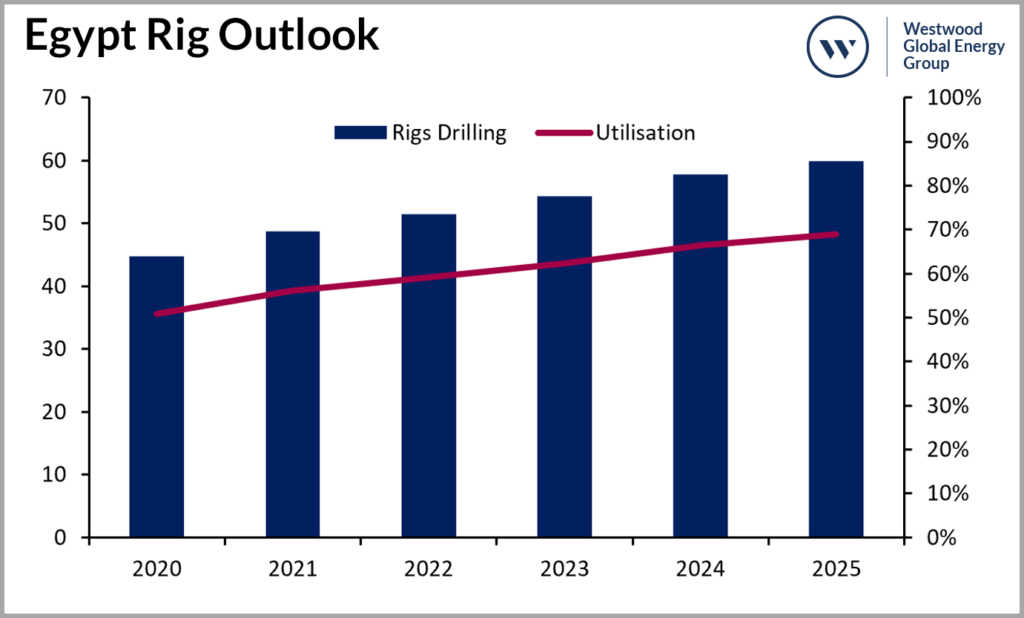
Figure 2: Egypt Rig Outlook
Source: Westwood Analysis
SDX energy were also among several companies who reported on activities in Egypt. The company announced the completion of the MSD-21 development well on the Meseda field in the Eastern Desert, Egypt. The well (MSD-21), drilled by the Star Nile Drilling Oil Services owned 1,000 HP, SNOS-5 rig reached a total depth of 1,445 metres, is the first of 12 wells to be drilled in a fully funded drilling campaign in the Meseda and Rabul oil fields. The drilling campaign is aimed at increasing production from 2,100 bbl/d to at least 3,500 bbl/d by early 2023. The rig will now be relocating to the MSD-25 well site and is expected to spud in mid-January 2022.
ENI announced three oil and gas discoveries in Egypt’s Western Desert, estimated to hold 50 million barrels of oil equivalent. All three wells were drilled by Agiba, a JV between ENI and the Egyptian General Petroleum Corporation. Two of the discovery wells, W-1X and Jasmine MWD-21, were in the Meleiha concession, while the third (SWM-4X) was in the Southwest Meleiha concession. The wells are expected to add a combined 6 kboe/d to ENIs production in the country. ENI has stated that additional appraisal and production wells will be planned immediately to help sustain production from the new discoveries.
Egypt also saw Pharos Energy spud the first well of a three well back-to-back development drilling programme. The first well was drilled by the 1,500 HP, ECDC 2 drilling rig. Once it reached total depth the well will be tested, completed and brought onstream using a workover rig, the initial three well programme is expected to be completed in February 2022. Petrosilah, on behalf of the joint venture, is currently tendering for two drilling rigs to continue the campaign and for H1 2022.
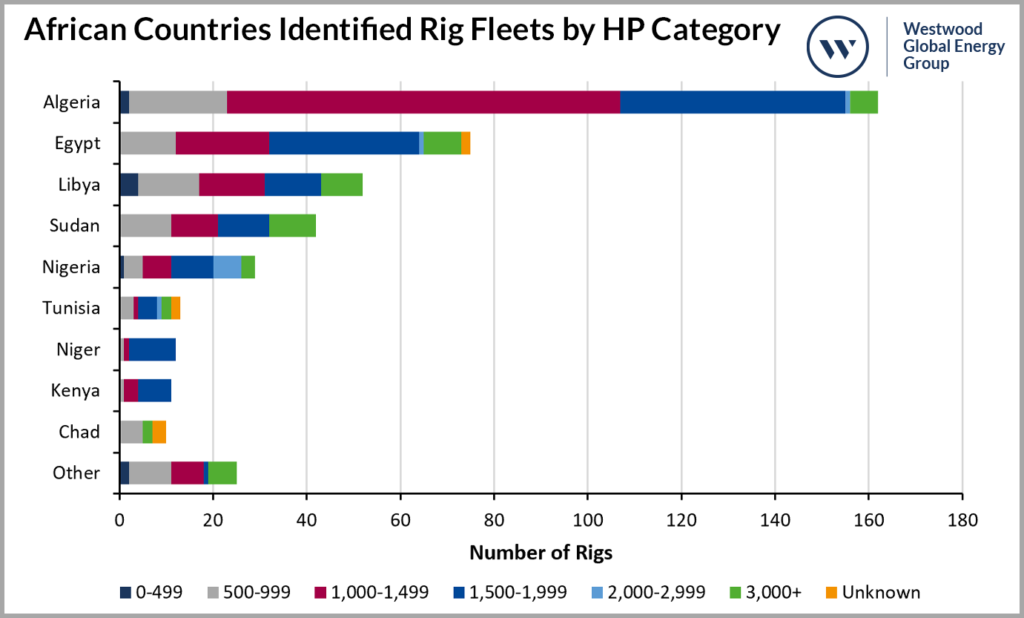
Figure 3: African Countries Identified Rig Fleets by HP Category
Source: Westwood Analysis
Russian independent Tatneft resumed drilling in Libya on 15 October with the B-2 appraisal well in the Gedamis area, 10 years after it had declared force majeure on its operations due to the civil war. The B-2 well had been suspended at a depth of 3,900 ft and will now be drilled to its planned depth of 8,700 ft. NOC chairman Mustafa Sanalla said Tatneft’s resumption of drilling “is a clear indication of the improvement in security conditions and that Libya has once again returned to the ranks of the targeted countries for investment in the oil and gas sector.”
TotalEnergies has also announced its intention to invest billions of dollars in Libya in aims to boost crude production, reduce flaring, and spend on solar. In line with the announcement, TotalEnergies has signed several agreements for the sustainable development of Libya’s natural resources, including a $2 billion investment to increase the production capacity of the Waha concessions, especially the 100,000 bpd North Gialo field in the Sirte Basin. TotalEnergies will also invest in gas gathering projects to cut back on flaring and supply power plants in the region. It is currently unclear how much additional drilling these agreements will see take place. Spanish giant Repsol also hinted at plans to resume activity in Libya if it could ensure stability.
However, on 20 December 2021, Libya’s key Sharara and Hamada oilfields, along with the Zawiya oil terminal were shut in due to a blockade by the Petroleum Facilities Guards (PFG). An armed group associated with the PFG closed the oilfields and pipeline due to a dispute with the Libyan NOC. Sources said the PFG had been unhappy with recent restructuring of the senior management at state owned Akakus Oil Operations. After three weeks of blockades Libya’s NOC finally managed to lift force majeure on crude exports but Libya is struggling to increase exports due to port closures in the east caused by bad weather and a lack of storage tanks at the terminals.
In South Africa Kinetiko Energy spud the Korhaan-3 well. The well is one of three, including Korhaan-4 and Korhaan-5, to be drilled at the Korhaan natural gas asset under the current drilling program. Korhaan-3 will be drilled to a depth of 400 to 450 metres and will test known coal bed methane horizons. Kinetiko Energy contracted Torque Africa Explorations, 140 HP, B21 truck mounted rig to carry out the drilling.
Tanzania Geothermal Development Company (TGDC) signed a contract worth $6 million with Chinese company, Shandong Kerui Petroleum and Gas Equipment Co Ltd, for a drilling rig and related services to help Tanzania develop its geothermal resources. The deal will enable TGDC to drill three geothermal exploration wells between 1,500 and 2,000 metres in depth. The first planned drilling site is in Ngozi in West Tanzania’s Mbeya region.
Australian junior Invictus Energy is close to securing Cluff Energy Africa as its partner to help fund its exploration campaign in Zimbabwe which includes the drilling of the Muzarabani-1 exploration well and potentially a follow up well depending on success. The deal will see Cluff Energy Africa funding 33.33% of the costs for a 25% non-operating interest in the asset. Invictus Energy claim the structure holds prospective resources of 8.2 tcf of gas and 247 mmbbl of condensate. Invictus Energy will utilise the Exalo Drilling owned, Rig 202, which will be mobilised once it has completed work for PanAfrican Energy on the Songo Songo field in Tanzania.
North America
North America saw several deals completed during 4Q 2021. On 4 October 2021, Patterson-UTI announced it had closed the acquisition of Pioneer Energy Service Corporation in a deal worth $278 million, this included the retirement of all Pioneers debt. The acquisition added 17 land drilling rigs to the Patterson-UTI US fleet, 16 of which are classified as super-spec. As well as this the acquisition included eight pad-capable drilling rigs in Colombia. Total consideration for the acquisition included the issuance of 23.6 million shares of Patterson-UTI common stock plus payment of $30 million in cash.
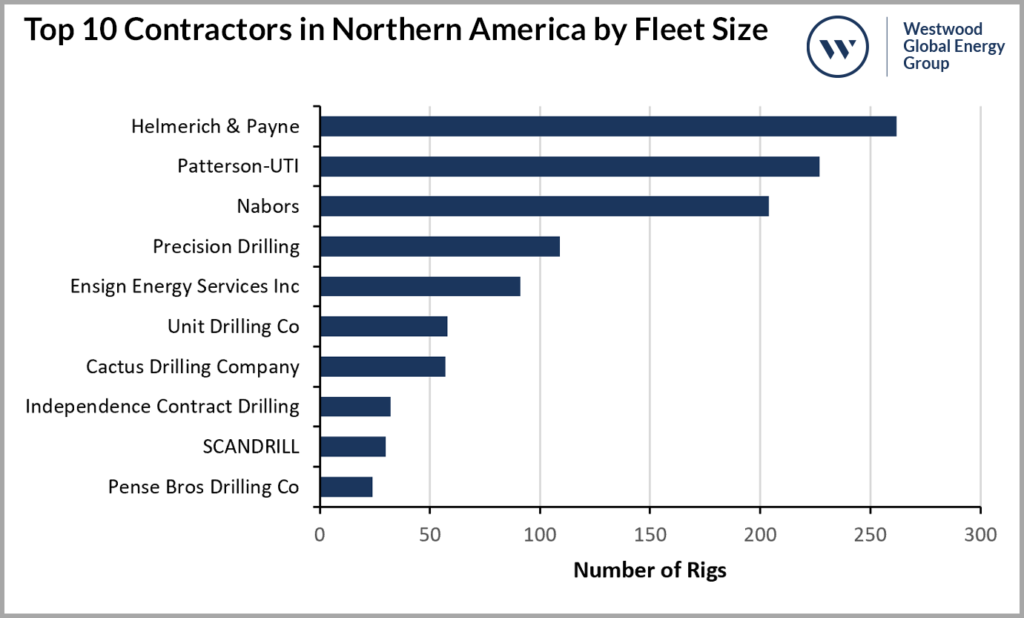
Figure 4: Top 10 Contractors in Northern America by Fleet Size
Source: Westwood Analysis
CWC Energy Services entered a definitive agreement worth $17.3 million to acquire SST Energy, adding 10 high spec triple drilling rigs to its fleet in the US and more than doubling its total fleet size to 19 drilling rigs. This increases CWC Energy Services US fleet from two to 12 drilling rigs. Of the 10 rigs included in the acquisition, all of which are fitted with top drives, five are AC triple drilling rigs ranging from 1,200 HP to 1,800 HP with 7,500 PSI circulating systems and depth ratings from 18,000 to 25,000 feet. Four of these have pad rig walking systems, three have high line electric power capabilities and two have carbon reduction bi-fuel capabilities to enhance the Environmental, Social and Governance profile for E&P customers. The other five are also triple drilling rigs ranging from 800 HP to 1,500 HP and have 5,000 – 7,500 PSI circulating systems and depth ranges from 12,000 to 22,000 feet.
Following the initial announcement of the transaction in 3Q 2021, ConocoPhillips completed the $9.5 billion deal for Shell’s Permian Basin assets on 1 December 2021. The deal adds 225,000 net acres, producing properties in Texas and 966 km of operated oil, gas and water pipelines and infrastructure, to ConocoPhillips’ portfolio. Production from the assets is expected to reach 200,000 boepd in 2022, half of which will be operated by ConocoPhillips. ConocoPhillips Chairman and Chief Executive, Ryan Lance, said “We believe the addition of these high-quality assets improves our underlying business drivers, expands our cash from operations, enhances our ability to deliver higher returns on and of capital, and lowers our average Green House Gas (GHG) intensity.”
Chesapeake Energy announced the completion of Vine Energy. Chesapeake Energy CEO, Nick Dell’Osso stated, ‘We are pleased to integrate the outstanding Vine operations and assets into our portfolio, strengthening our position in the Haynesville Shale with over 900 additional drilling locations, immediately improving our free cash flow profile and accelerating a significant return of capital to our shareholders at a time of favourable natural gas prices.’ Chesapeake Energy also reached an agreement with Nabors to make Nabors their preferred drilling contractor for the company’s shale oil and natural gas assets.
Earthstone Energy bought Chisholm Energy for $604 million. The deal includes 36,100 net acres in the northern Delaware basin, New Mexico, which contains a productive unconventional play. Current net production sits at 13,500 boe/d. The deal also includes 414 gross and 237 net operated identified drilling locations. The deal is set to be completed in the first quarter of 2022.
Callon Petroleum acquired the leasehold interests and related infrastructure assets of Primexx Energy Partners and its affiliates in the Delaware basin, onshore US. During 4Q 2021 Callon intended to operate six drilling rigs as the Primexx development program is expanded, as well as placing 18 wells onstream in its Permian Basin assets. Callon also entered an agreement to sell acreage in the Eagle Ford Shale for $100 million, subject to closing adjustments. The deal includes 22,000 net acres in the northern LaSalle and Frio counties. The net daily production associated with the asset is 1,900 boe/d. The deal will take Callon’s 2021 divestment program over $140 million.
Canadian oil & gas company Cenovus Energy has announced that it has agreed to sell its Tucker thermal asset in Alberta, Canada for $800 million, though the buyer was not named. The asset is one of four that the company operates, with the company deciding to sell Tucker to reduce net debt as well as increase shareholder returns. Average production of the asset ranges between 18 kbbl/d and 21 kbbl/d, the deal is expected to complete in January 2022.
In Alaska, 88 Energy Limited have started snow road preparations ahead of the drilling of the Merlin-2 appraisal well. Operations are on track with the well expected to be spud in February 2022. The Merlin-2 well will be drilled by the 600 HP, Doyon Drilling Arctic Fox rig, and will target 652 million barrels of unrisked prospective resource. The rig will undergo a pre-commissioning inspection in early January, immediately prior to being mobilised to the drill site.
Latin America
In November, Melbana Energy announced the successful setting of liner and isolation of high-pressure zones at the Alameda-1 well, Cuba. The exploration well, which is being drilled by Sherritt International’s Rig 1, was drilled to a depth of 1,892 metres. However, the well was suspended due to delays in the arrival of additional supplies of Barite which is used in drilling mud. Melbana Energy has since started preparations to resume drilling at the Alameda-1 wellsite in Block 9, Cuba. The well had been shut in following a delay to the supply of mud materials needed when it entered a high-pressure zone 350 metres shallower than expected. The operations team has utilised this time to conduct maintenance on the Sherritt International Rig 1 and to recondition the in-situ mud materials.

Figure 5: Latin America Identified Land Drilling Rigs by Country
Source: Westwood Analysis
PetroTal has announced a peaceful end to the social protests near its oil loading facility in Peru. Barges from Brazil are now able to commence oil loading allowing PetroTal to increase production over the next few days and recommence sales to the Iquitos refinery and through the Brazilian export routes. Production increases will start with the 9H horizontal well which was completed on 1 December and put on production on 5 December 2021.
The 9H horizontal well will be followed by seven further wells in the Bretaña field. All wells will be drilled by the 2,000 HP, Petrex-12 (PTX-12) drilling rig. The next well in the campaign is the 10H well, set to be drilled in Q1 2022. The drilling campaign is set to be completed in Q1 2023.
Asia
In October 2021 Chinese Premier Li Keqiang called upon operating companies to invest in shale gas and coal bed methane to ensure enough energy supply to bridge the gap until renewables can play a significant role in meeting the country’s increasing energy demand. A Ministry of Natural Resources survey shows that China contains 21.8 tcm of technically recoverable shale gas resources. China has three key basins when it comes to unconventional oil and gas, the Ordos, Songliao and Jungar basins.
In the Ordos basin PetroChina Changqing Oil Company has targets to increase shale oil reserves by 7.35 billion barrels, of which 4.45 billion barrels will be tapped for development by 2025. To do this, PetroChina Changqing Oil Company plans to drill 1,439 horizontal wells by 2025. PetroChina Changqing already operates the Qingcheng shale oil field in the Ordos basin with 7.3 billion barrels of oil in place, on which it has already drilled 504 horizontal wells.
In the Songliao basin, PetroChina made a potentially large shale oil discovery at the Gulong prospect with reserves expected to exceed 8.45 billion barrels. PetroChina will continue to drill more wildcats and appraisal wells over the next five years.
The Jungar basin has seen PetroChina launch a 10-year campaign to increase shale oil exploration and development at the Jimsaer prospect. The company plans to construct 85 well pads in high-prospect areas with 302 horizontal wells scheduled to be drilled.
India offered 75 oil and gas blocks, covered by 32 contract areas, in its third discovered small fields bid round. A total of 11 contract areas are located onshore in the Assam Arakan belt, Rajasthan Cambay, Vindhyan and the Krishna Godavari basins. Bid submissions will start on 1 February 2022 and end on the 15th March 2022. The development of the fields is seen as key to Prime Minister Narendra Modi’s plan to reduce oil imports by as much as 10% during the next few years. India hosts a fleet of over 180 land drilling rigs with state-owned ONGC being the largest rig provider with over 65 land drilling rigs in its Indian fleet. ONGC has also ordered 47 new land rigs, 20 workover and 27 drilling rigs, of which 23 are set to all be delivered by March 2022.
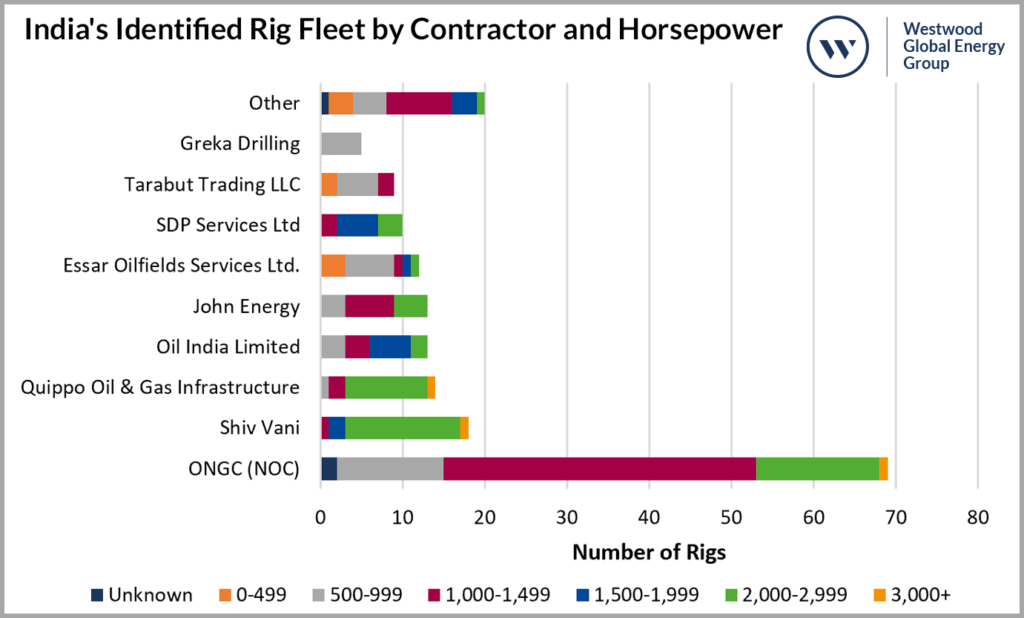
Figure 6: India’s Identified Rig Fleet by Contractor and Horsepower
Source: Westwood Analysis
Interra Resources announced its joint venture entity Goldpetrol Joint Operating Company (60% Interra Resources, 40% ZhenHua Oil) has spud the CHK 1229 development well on the Chauk oilfield, Myanmar. The well will be deviated and drilled to a total depth of 3,650 ft, it is in a region where most oil and gas activity has been suspended since February 2021 when a military coup took place. The well was initially planned to be spud in 2022 but due to rig availability and ground conditions, the decision was made to bring forward the spudding of the well. Goldpetrol will utilise its own ZJ 450 drilling rig thus keeping drilling costs relatively low.
Australasia
New Zealand Oil and Gas and it’s 50.04% owned subsidiary, Cue Energy Resources has announced the completion of the $21.05 million Amadeus Basin deal with Central Petroleum in Australia. The acquisition comprises of a 25% interest in the Mereenie oil and gas field as well as 50% interest in both the Palm Valley and Dingo gas fields. Central Petroleum remain operator of the assets. The newly formed joint venture basin has already hired the 1,500 HP Ensign Rig 963 unit to drill the Palm Valley Deep and Dingo-5 exploration wells. The first well is planned to be spud in the first half of February 2022. In addition to the planned drilling at Palm Valley and Dingo, Central Petroleum is mobilising a coil tubing unit to the Mereenie field in January to improve production from several wells including some of the previous development campaign wells.
Timor Leste saw its first exploration drilling activity in 50 years with privately owned Timor Resources making an oil and gas discovery with the Feto Kmaus exploration well, the first of two planned exploration wells in Suai. The well was drilled using the 1,100 HP Loadcraft Drilling Rig that was constructed in the United States and arrived in Timor Leste in 2020. Eastern Drilling is providing the unit as well as the operations team. The rig has now been moved to the drilling location of the second exploration well, believed to be called Liurai.
Austrian energy company OMV has announced that an onshore drilling campaign at its under-performing Pohokura field in New Zealand will start in Q1 2022. The field has seen year-on-year production decline since 2018, though it remains the largest field in the country. The Pohokura field is located offshore, but much of the drilling for the field has taken place onshore, as will the additional wells to be drilled in 2022. Todd Energy will be supplying their 2000 HP, Big Ben rig which has a hookload capacity of 992,080 lb for the operation.
Eastern Europe and FSU
Block Energy is making good progress with preparatory operations for the JKT-01 side-track, Georgia. The well will be drilled by the JSC Norio Oil Company owned, 1,000 HP, ZJ-40 rig. Spudding was due in early December 2021. The JKT-01 well is near to newly installed infrastructure allowing any associated gas produced to be quickly monetised rather than flared. This follows Block Energy’s efforts to reduce its environmental footprint in Georgia. The KRT-39 well is already utilising the new infrastructure which consists of two gas separators and a 4.2km pipeline.
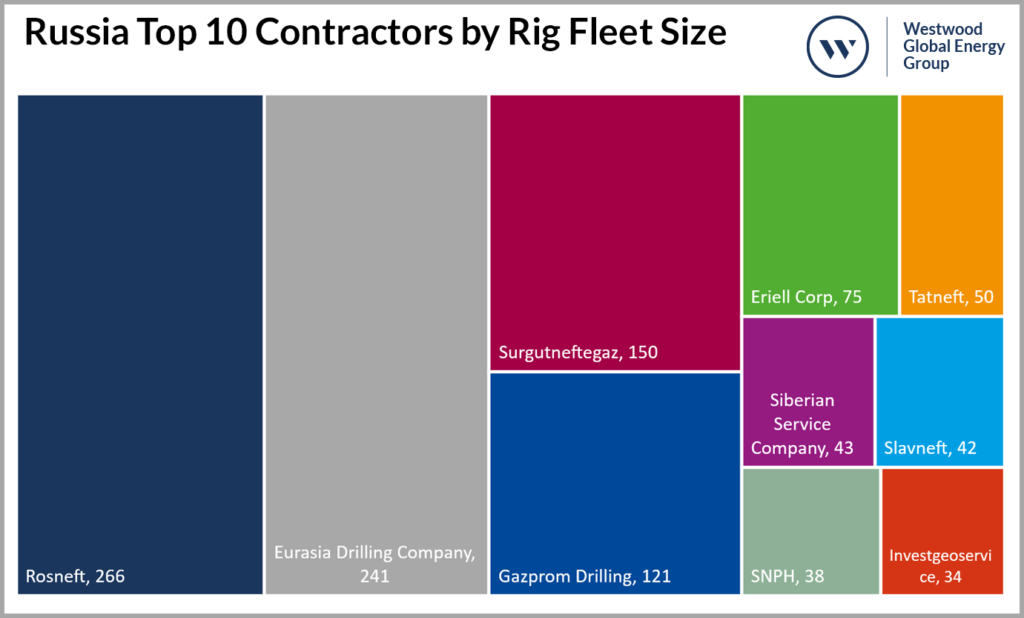
Figure 7: Russia Top 10 Contractors by Rig Fleet Size
Source: Westwood Analysis
Western Europe
ADX Energy signed a farm in agreement with XState Resources to partially fund the drilling of the Anshof prospect in the ADX-AT-II exploration lease, Upper Austria. The agreement saw XState cover 40% of the Anshof-3 well in exchange for a 20% equity interest in the Anshof Prospect Area. XState also has an option to fund 20% of a second well to acquire a 20% interest in the entire Anshof Farmin Area. The Anshof-3 well was drilled by the 1,250 HP, RAG owned E-200 drilling rig and was successful, discovering oil in the primary Eocene target, the well was drilled to a depth of 2,400 metres. It. Austria hosts a fleet of just two land drilling rigs, the E-200 and the E-202, both rigs are 1,250 HP and capable of drilling to a depth of 18,000 ft.
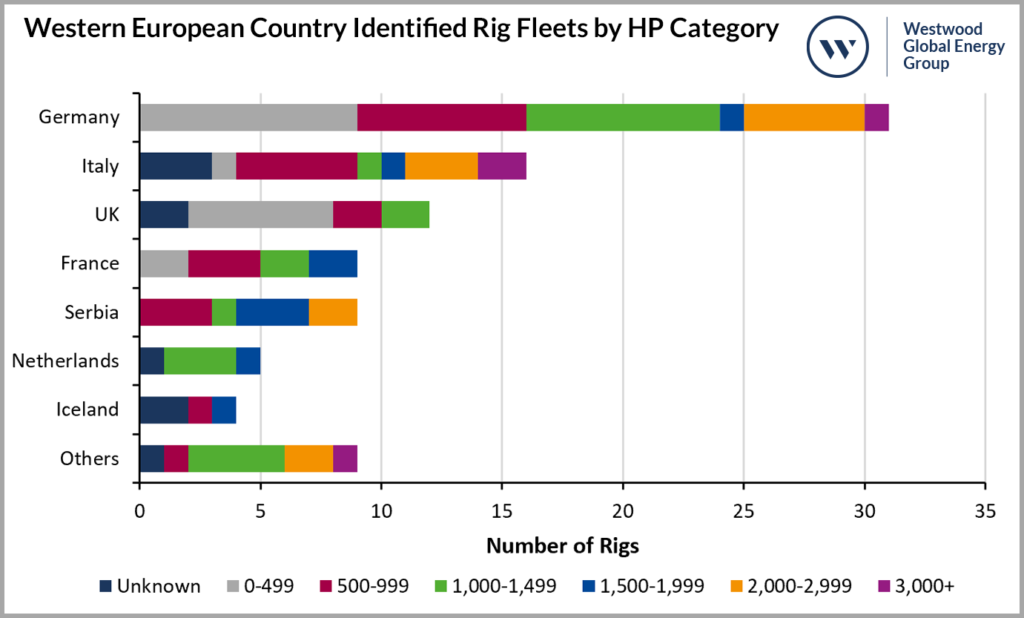
Figure 8: Western European Country Identified Rig Fleets by HP Category
Source: Westwood Analysis
Po Valley Energy announced a delay to the Selva redevelopment project in Italy. The project, which initially targeted production start-up in 2020 has been delayed to 2023. The primary reason for this is a delay to the tie-in of the pipeline from the Selva field to the national grid. This is likely to further delay plans for additional drilling activity at the field. Phase one of the project does not include any additional drilling and instead focuses on the installation of a gas plant and a tie-in to the existing pipeline grid. Drilling of additional wells, in the Selva East, Selva South Flank, and Riccardina prospects, is scheduled for the second phase of the project.
Summary
Many rig contractors will be looking forward to leaving the last couple of years behind them and with good reason. Lower drilling rates caused by covid-19 and the oil price crash has seen the already languishing land rig utilisation rates of 2018 and 2019 plummet to well below 50% for many regions. However, the industry is starting to see brighter days with oil prices in excess of $80 a barrel helping spur drilling activity across the globe. Despite this improvement, an increasing focus on capital discipline and investor returns for listed operators means global rig activity levels is likely to lag behind historic highs for some time yet. International contractors will also have to be patient with NOCs in key regions utilising their own rig fleets where possible, but with an increasing workload now more apparent there are positives to look forward to.

